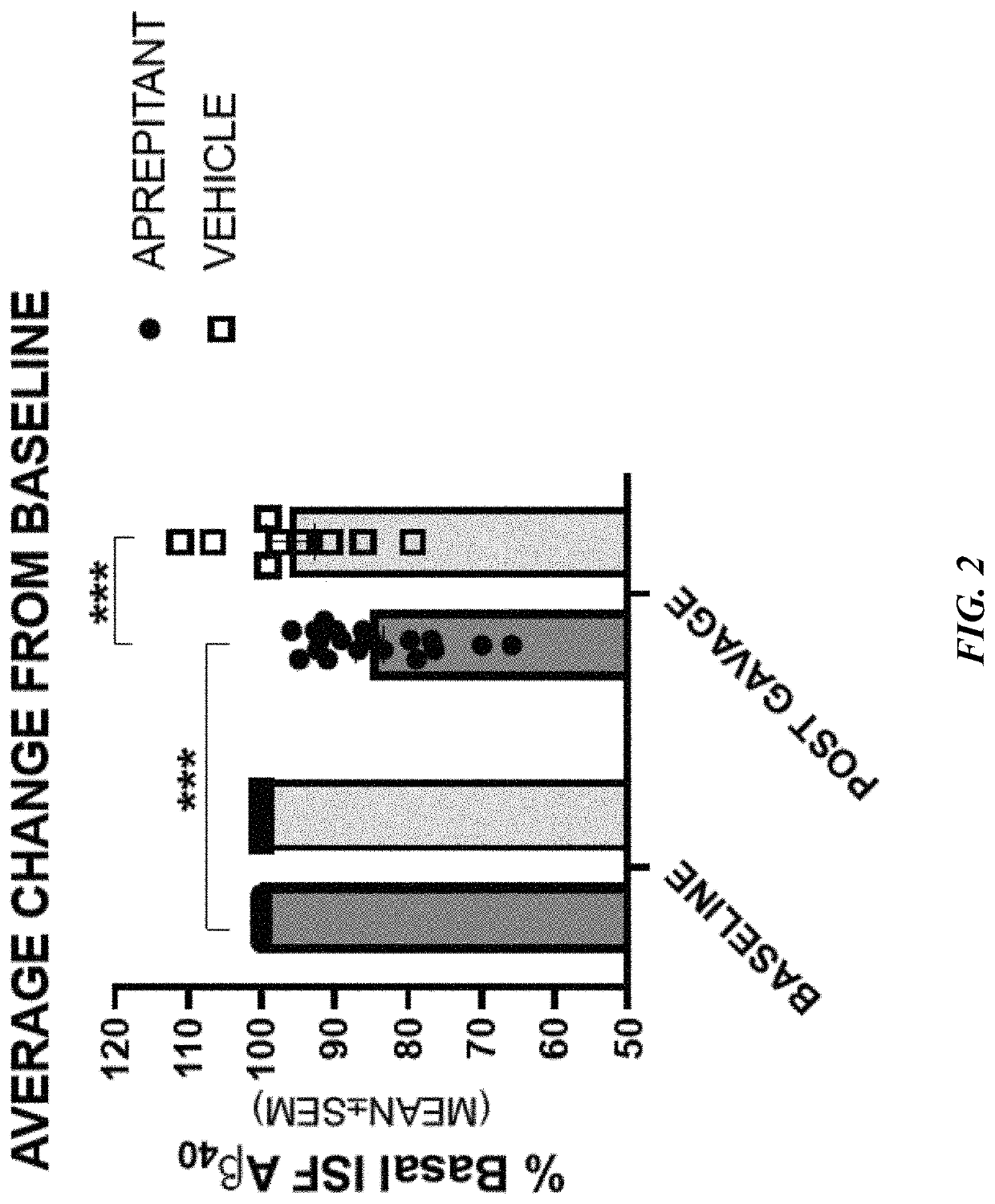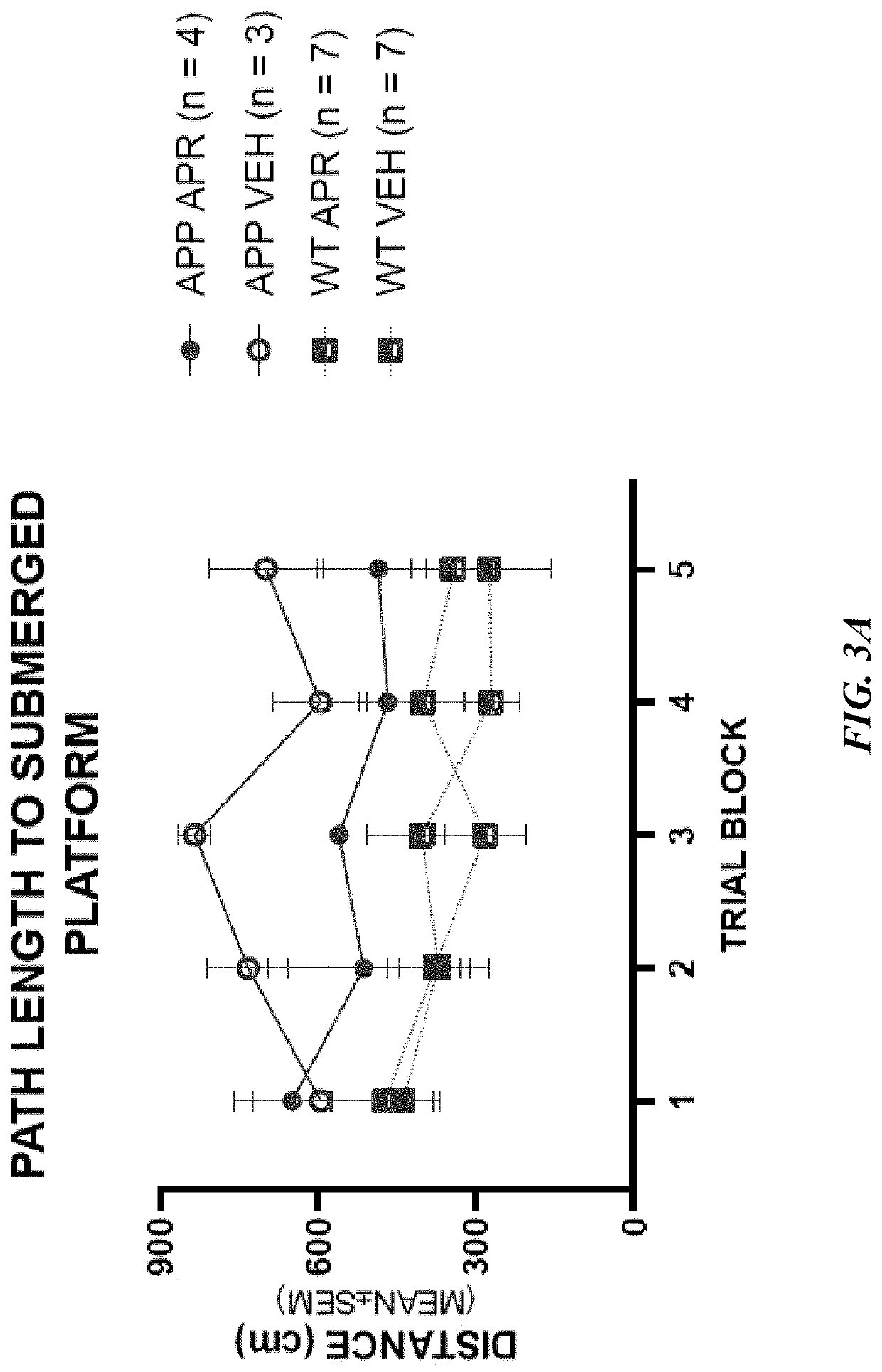Use of aprepitant for treating alzheimer's disease
a technology for alzheimer's and aprepitant, applied in the field of progressive neurodegenerative disorders, can solve the problems of cognitive function decline, memory, learning, language, ability decline, and other problems, and achieve the effect of improving cognitive function, social deterioration, and emotional deterioration
- Summary
- Abstract
- Description
- Claims
- Application Information
AI Technical Summary
Benefits of technology
Problems solved by technology
Method used
Image
Examples
example 1
A Method of Treating Alzheimer's Disease
[0198]A subject suffering from Alzheimer's disease (AD) is identified. The subject is then orally administered about 10-100 mg (e.g., about 10 mg, 20 mg, 30 mg, 40 mg, 50 mg, 60 mg, 70 mg, 80 mg, 90 mg or 100 mg) of a composition comprising aprepitant or a pharmaceutically acceptable salt, solvate, stereoisomer thereof as the sole therapeutic agent, twice a day. The subject is monitored for symptoms of AD.
example 2
A Method of Delaying or Reducing the Likelihood of Onset of Alzheimer's Disease
[0199]A subject that is at a risk of suffering from Alzheimer's disease (AD) is identified. The subject is then orally administered about 10-100 mg (e.g., about 10 mg, 20 mg, 30 mg, 40 mg, 50 mg, 60 mg, 70 mg, 80 mg, 90 mg or 100 mg) of a composition comprising aprepitant or a pharmaceutically acceptable salt, solvate, stereoisomer, or prodrug thereof as the sole therapeutic agent, twice a day. The subject is monitored for symptoms of AD.
example 3
A Method of Delaying or Reversing the Progression of Alzheimer's Disease
[0200]A subject suffering from Alzheimer's disease (AD) is identified. The subject is then orally administered about 10-100 mg (e.g., about 10 mg, 20 mg, 30 mg, 40 mg, 50 mg, 60 mg, 70 mg, 80 mg, 90 mg or 100 mg) of a composition comprising aprepitant or a pharmaceutically acceptable salt, solvate, stereoisomer, or prodrug thereof as the sole therapeutic agent, twice a day. The subject is monitored for symptoms of AD.
PUM
| Property | Measurement | Unit |
|---|---|---|
| time | aaaaa | aaaaa |
| time | aaaaa | aaaaa |
| time | aaaaa | aaaaa |
Abstract
Description
Claims
Application Information
 Login to View More
Login to View More - R&D
- Intellectual Property
- Life Sciences
- Materials
- Tech Scout
- Unparalleled Data Quality
- Higher Quality Content
- 60% Fewer Hallucinations
Browse by: Latest US Patents, China's latest patents, Technical Efficacy Thesaurus, Application Domain, Technology Topic, Popular Technical Reports.
© 2025 PatSnap. All rights reserved.Legal|Privacy policy|Modern Slavery Act Transparency Statement|Sitemap|About US| Contact US: help@patsnap.com



